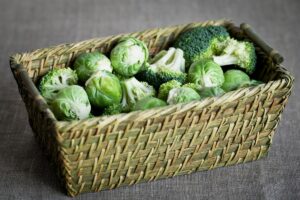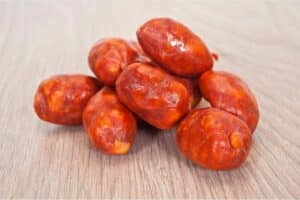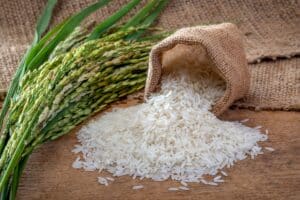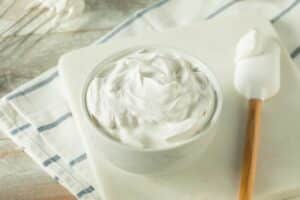A strawberry doesn’t look like a raspberry, but a raspberry looks like an unripe mulberry. A ripe mulberry looks like a blackberry, but a blackberry doesn’t taste like a mulberry!
Yes, the world of berries is complicated but amazingly delicious, and today’s topic will center on the two varieties that are the trickiest to tell apart: mulberries and blackberries.
Both berries are soft, delicious, and just the right amount of juicy. So how can we make a difference? Let’s “berry” the hatchet.
Difference Between Mulberry and Blackberry
The main difference between mulberries and blackberries is that they sprout on different kinds of plants. Mulberries thrive on trees, while blackberries are a bush-only fruit.
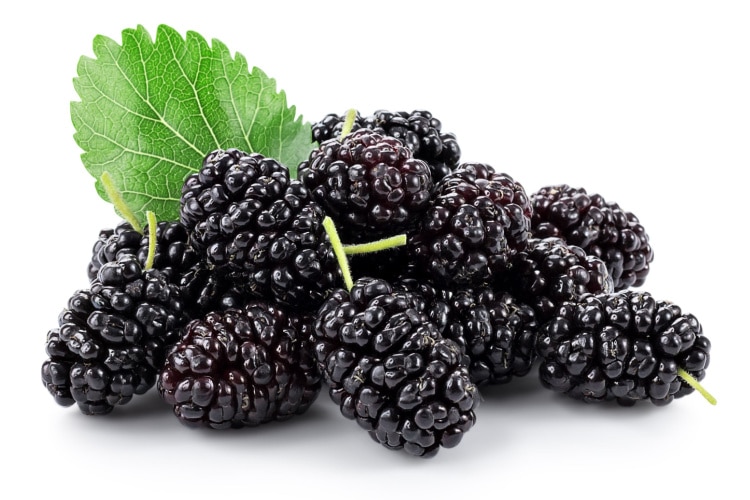
Because of that, blackberries and mulberries don’t taste the same. But it’s fair to be perplexed because the fruits look nearly identical after they’re picked.
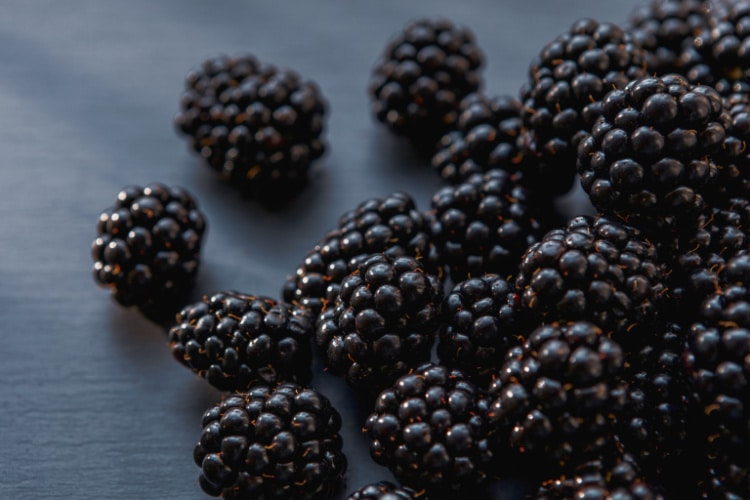
Therefore, understanding their habitat can help you appreciate how distinct they really are. Let’s dive deep into the different yet similar world of mulberries and blackberries.
Different Genus Species
Mulberries are members of the Morus genus, which is part of the Moraceae plant family. Blackberries are members of the Rubus genus, which is part of the Rosaceae plant family.
Although the fruits of both genera seem similar, mulberries and blackberries are unrelated.
Different Habitats
Mulberries are thornless, upright, mid-sized trees native to Africa, Asia, and Europe. There are three types of mulberries: red, black, and white.
Red mulberries may reach a height of nearly 50ft, and white mulberry can grow up to 18 ft tall. Black mulberries can reach up to 32 ft and therefore fall between the two other species in size.
On the other hand, blackberries are native to South America and the temperate Northern hemisphere. They are members of the “bramble” family of shrubs.
These brambles develop several stems known as “canes,” which can have either a self-supporting arching growth pattern or a trailing growth behavior in which the canes spread over the ground.
Blackberry types may grow up to 10 feet tall. Some varieties of blackberries have thorny canes, while others are thornless. There is also a third type called trailing thornless blackberries, and to grow them, you need a trailing system, as the name indicates.
Different Leaves
Mulberry leaves have toothed edges and are deeply lobed. In contrast, blackberries have complex leaves with three to five leaflets per leaf. Each leaflet has a pointed end and an oval shape. The leaves have a prickly feel and finely serrated edges.
Different Fruit
Both blackberries and mulberries produce “drupelets,” which are clusters of little, individual fruits.
Both plants’ fruits are often fairly light in color while immature but turn a rich, purple-black when fully developed. However, when mature, the fruits of red and white mulberries can turn a lighter shade of red or purple.
A handful of Rubus species have mature fruits that easily separate from the stem around which they grow. However, a blackberry is attached more firmly and is usually harvested with the stem intact.
Mulberry fruits are also harvested with their stems intact, but they drop very easily when ripe. They fall so easily that they are usually harvested by placing sheets under the trees and shaking the branches so that the fruits fall onto the sheets.
Different Appearance
Blackberries are sphere-shaped berries. They are about an inch long and an inch wide. Although they are much bigger than raspberries, they are smaller than mulberries.
Mulberries, on the other hand, may grow to two inches in length and have an oval shape.
Different Flavor
Mulberries have a sweet and tangy flavor. The juiciest, sweetest, and tartest members of this berry family are black mulberries. A white mulberry is sweet but almost completely devoid of tartness, whereas a red mulberry is more balanced. Blackberries have a similar tart and sweet flavor but also a hint of earthiness. The earthy and woody flavors come from the edible center.
Different Aroma
Mulberries share their sweetness through their aroma as well. In addition to their sweetness, you’ll also detect fruity scents. On the other hand, blackberries smell more earthy and woody. When you smell them, you may also detect flowery scents.
Mulberry vs Blackberry Comparison Table
| Category | Mulberry | Blackberry |
| Genus | Morus | Rubus |
| Plant family | Moraceae | Rosaceae |
| Type of plant | Tree | Bush |
| Types | White, red, and black | Thorny, thornless, and trailing thornless |
| Origin | Africa, Asia, and Europe | South America and the temperate Northern hemisphere |
| Height | Red mulberry: 50ft tall Black mulberry: 32ft White mulberry: 18ft tall | 10ft tall |
| Stems | Thornless | Thorny or thornless |
| Leaves | Toothed edges and are deeply lobed | Pointed ends, prickly feel, and finely serrated edges |
| Fruit color | Black, red, and white | Purple-black |
| Fruit shape | Oval | Circular |
| Fruit size | 2” long and 1” wide | 1” long and 1” wide |
| Fruit flavor | Sweet and tangy | Sweet, tangy, and earthy |
| Fruit aroma | Fruity and sweet | Floral and earthy |
Nutritional Content Breakdown: Which One Is Healthier?
Looking at the nutritional table below, we can see that blackberries and mulberries contain the same 43 calories. Blackberries are higher in fiber and fats, whereas the proteins, carbs, and sugars in mulberries are somewhat greater.
Both mulberries and blackberries are stacked with vitamins. Mulberries are greater in vitamin C, B6, B1, and B2. Blackberries have greater levels of vitamin E, vitamin K, and vitamin A.
When it comes to minerals, blackberries have greater levels of copper and zinc. Mulberries, on the other hand, are higher in calcium, iron, potassium, and phosphorus. Blackberries have less sodium, whereas the magnesium content of the two fruits is quite similar.
Since both fruits are nutritional bombs, there is no obvious winner in the showdown over which is healthier. The decision is based purely on personal preference.
Mulberry vs Blackberry: Nutritional Profile
| Category (100g) | Black Mulberry | Blackberry |
| Calories | 43 | 43 |
| Carbs | 9.8g | 9.61g |
| Fat | 0.39g | 0.49g |
| Protein | 1.44g | 1.39g |
| Fiber | 1.7g | 5.3g |
| Sugar | 8.1g | 4.88g |
| Vitamins & Minerals | ||
| Calcium | 39mg | 29mg |
| Iron | 1.85mg | 0.62mg |
| Magnesium | 18mg | 20mg |
| Vitamin A | 25IU | 214IU |
| Sodium | 10mg | 1mg |
| Vitamin C | 36.4mg | 21mg |
| Phosphorus | 38mg | 22mg |
| Copper | 0.06mg | 0.165mg |
| Potassium | 194mg | 162mg |
| Zinc | 0.12mg | 0.53mg |
| Folate | 6µg | 25µg |
| Vitamin B2 | 0.101mg | 0.026mg |
| Vitamin E | 0.87mg | 1.17mg |
| Vitamin B1 | 0.029mg | 0.02mg |
| Vitamin B3 | 0.62mg | 0.646mg |
| Vitamin B6 | 0.05mg | 0.03mg |
| Vitamin K | 7.8µg | 19.8µg |
Can I Substitute Mulberry for Blackberry and Vice Versa?
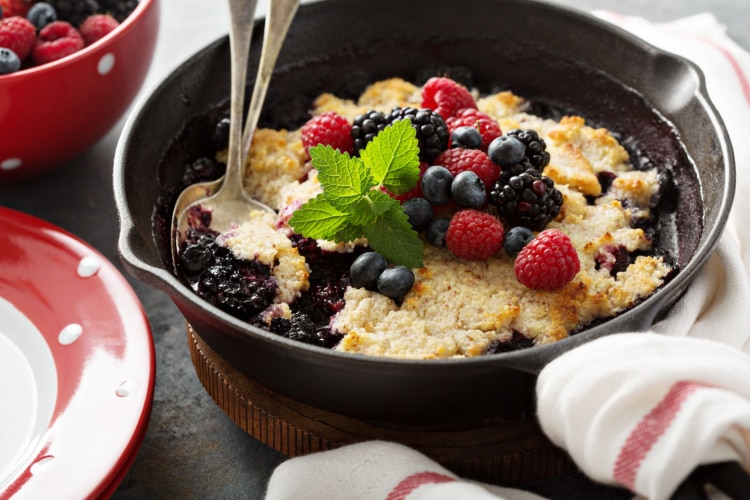
Mulberries and blackberries are similar in terms of appearance and flavor. Because of this, substituting blackberries for mulberries or vice versa won’t make a difference in the final dish.
Some of the best recipes where you can substitute blackberries for mulberries and vice versa are the following:
- Apple & berry crumble pudding with freshly squeezed lemon juice and cinnamon
- Berry crumble pie with blackberries/mulberries and blueberries
- Baked oats with berries, honey, banana, and orange zest
- Peach and berry cobbler with cinnamon and lemon juice
Conclusion
That’s all in our discussion on mulberries and blackberries, we hope that you enjoyed it — berry — much!
The good thing is that you may interchange one for the other in your recipes, but remember that these berries are rather distinct.
A mulberry is lengthy and has a more oval form, whereas a blackberry is short, glossy, and spherical.
Mulberries offer more nutrients, whereas blackberries often have higher sugar content. Because of this, you should definitely try mulberries and blueberries at least once because both are considerably healthy!
So which fruit will capture your heart, berry lovers? Will it be mulberries or blackberries? Whichever one you choose, enjoy!


